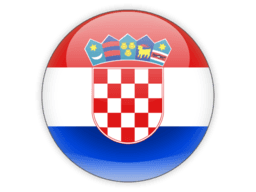
Regions of Croatia
Explore 21 regions
Cities of Croatia
Discover 50 cities across 19 regions
Bjelovar-Bilogora(2)
County of Osijek-Baranja(4)
Dubrovnik-Neretva(2)
Istria(4)
Koprivnica-Križevci(2)
Međimurje(1)
Požega-Slavonia(1)
Primorje-Gorski Kotar(3)
Šibenik-Knin(2)
Sisak-Moslavina(3)
Split-Dalmatia(7)
Varaždin(1)
Virovitica-Podravina(2)
Vukovar-Srijem(3)
Zadar(1)
Croatia is a small country located in southeastern Europe, bordered by Slovenia to the northwest, Hungary to the northeast, Serbia to the east, Bosnia and Herzegovina to the southeast, and the Adriatic Sea to the southwest. The country has a population of around 4 million people, with the majority living in urban areas.
The official language of Croatia is Croatian, and the country has a rich cultural heritage, with influences from the Mediterranean, Central Europe, and the Balkans. Croatia is known for its historic cities, beautiful coastline, and stunning natural beauty.
The capital and largest city of Croatia is Zagreb, which is home to a vibrant arts and cultural scene. Other major cities in Croatia include Split, Dubrovnik, and Rijeka, which are popular tourist destinations.
The economy of Croatia is diverse, with industries including tourism, agriculture, and manufacturing. The country is known for its production of wine, olive oil, and seafood, as well as its shipbuilding and automotive industries. Tourism is a significant contributor to the economy, with visitors drawn to the country's beautiful coastline, historic cities, and natural parks.
Croatia has a rich history, with evidence of human habitation dating back to the Neolithic period. The country has been ruled by various powers throughout history, including the Romans, Venetians, and Ottoman Empire. Croatia declared independence from Yugoslavia in 1991, and the country has since made significant progress in economic development and democratic governance.
Croatia is known for its stunning natural beauty, with over 10% of the country's land protected in national parks and reserves. The country has a diverse landscape that includes mountains, forests, rivers, and a long coastline with hundreds of islands.
Overall, Croatia is a small but vibrant country with a rich cultural heritage, beautiful natural scenery, and a growing economy. It remains a popular tourist destination and a member of the European Union, with a strong commitment to democracy and human rights.
National holiday
Statehood Day (National Day), 30 May (1990); note - marks the day in 1990 that the first modern multi-party Croatian parliament convened
Telephone Code
385
Local Emergency Phone
112
Vaccinations
See WHO recommendations
Climate
Mediterranean and continental; continental climate predominant with hot summers and cold winters; mild winters, dry summers along coast
Currency (Code)
Euros (EUR)
Electricity/Voltage/Plug Type(s)
230 V / 50 Hz / plug types(s): C, F
Major Languages
Croatian 95.6%, Serbian 1.2%, other 3% (including Hungarian, Czech, Slovak, and Albanian)
Major Religions
Roman Catholic 86.3%, Orthodox 4.4%, Muslim 1.5%
Potable Water
Yes
International Driving Permit
Suggested
Road Driving Side
Right
Tourist Destinations
Zagreb; Plitvice Lakes National Park; Kornati National Park; Split; Zadar's Romanesque churches; Zlatni Rat Beach; Kor?ula Town; Mljet National Park; Dubrovnik; Osijek; Stecci Medieval tombstones
Major Sports
Soccer, basketball, tennis
Cultural Practices
When eating, be sure to accept second helpings if offered. Refusal is considered impolite.
Tipping Guidelines
Tips are often included in restaurant bills, but, if not, add 10%; loose change or rounding up to the next convenient number is acceptable at bars. A tip of 15-20 kuna per bag for a hotel porter to deliver luggage to your room is appreciated. A daily tip of 15-20 kuna for housekeeping is considered to be good. Taxi drivers are not usually tipped.
Souvenirs
Lace and embroidered items, silver and coral jewelry, carved heart items; lavender, olive oil, and truffle products; handmade non-edible dough painted and/or bejeweled ornaments, wine and liqueurs
Traditional Cuisine
Zagorski štrukli — dough and various types of filling either boiled or baked; a mixture of cottage cheese with eggs, sour cream, and salt is spread thinly over the dough which is rolled lengthwise into two joined rolls and then cut into pieces before cooking
Geography
Area
total: 56,594 sq km
land: 55,974 sq km
water: 620 sq km
Climate
Mediterranean and continental; continental climate predominant with hot summers and cold winters; mild winters, dry summers along coast
Natural resources
oil, some coal, bauxite, low-grade iron ore, calcium, gypsum, natural asphalt, silica, mica, clays, salt, hydropower
People and Society
Population
4,169,239 (2023 est.)
Ethnic groups
Croat 90.4%, Serb 4.4%, other 4.4% (including Bosniak, Hungarian, Slovene, Czech, and Romani), unspecified 0.8% (2011 est.)
Languages
Croatian (official) 95.6%, Serbian 1.2%, other 3% (including Hungarian, Czech, Slovak, and Albanian), unspecified 0.2% (2011 est.)
Religions
Roman Catholic 86.3%, Orthodox 4.4%, Muslim 1.5%, other 1.5%, unspecified 2.5%, not religious or atheist 3.8% (2011 est.)
Population growth rate
-0.47% (2023 est.)
Government
Government type
parliamentary republic
Capital
name: Zagreb
Economy
Economic overview
tourism-based economy that was one of the hardest hit by COVID-19 economic disruptions; newest euro user since 2023, helping recover from a 6-year recession; public debt increases due to COVID-19 and stimulus packages; weak exports; continuing emigration; new liquefied natural gas import terminal
Real GDP (purchasing power parity)
$123.348 billion (2021 est.)
Real GDP per capita
$31,600 (2021 est.)
Agricultural products
maize, wheat, sugar beet, milk, barley, soybeans, potatoes, pork, grapes, sunflower seed
Industries
chemicals and plastics, machine tools, fabricated metal, electronics, pig iron and rolled steel products, aluminum, paper, wood products, construction materials, textiles, shipbuilding, petroleum and petroleum refining, food and beverages, tourism
Exports
$35.308 billion (2021 est.)
Exports - partners
Italy 13%, Germany 13%, Slovenia 10%, Bosnia and Herzegovina 9%, Austria 6%, Serbia 5% (2019)
Exports - commodities
refined petroleum, packaged medicines, cars, medical cultures/vaccines, lumber (2019)
Imports
$36.331 billion (2021 est.)
Imports - partners
Italy 14%, Germany 14%, Slovenia 11%, Hungary 7%, Austria 6% (2019)
Imports - commodities
crude petroleum, cars, refined petroleum, packaged medicines, electricity (2019)
International Airports in Croatia
Discover 8 major airports serving Croatia
Mark Croatia as Visited
Add Croatia to your personal travel map and track your journey around the world. Share your adventures and see your progress grow!